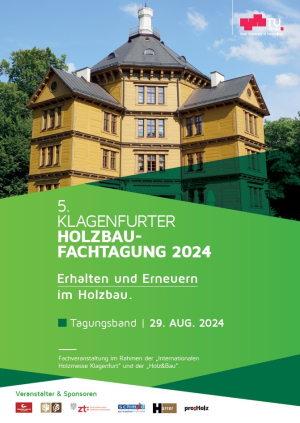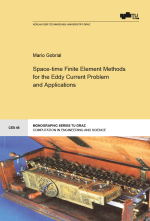Durability and robustness, two terms that are mentioned in the Eurocodes, but which lead a rather unnoticed existence alongside the prominently positioned limit states of load-bearing capacity and serviceability. But it is precisely the appreciation of these two aspects that would have a lasting influence on construction. It starts with the design, with the choice of simple load-bearing structures, solid constructions combined with high-quality materials. If a pinch of traditional craftsmanship is added, the result could be beautiful and long-lasting buildings that are sustainable in the truest sense of the word. In the Antonin hunting lodge, a three-storey wooden building by K. F. Schinkel, all this can still be admired today. Completed 200 years ago, it not only meets all of today’s requirements, but is also simply a beautiful building.
J. Ruskin concludes his book “The Seven Candlesticks of Architecture” [1904] with the maxim “The Importance and Value of Restriction” in which he says: “Build nothing that you can spare”. M. A. Lampugnani puts it in a nutshell in his book “Gegen Wegwerfarchitektur” [2023] with his quote: “The most ecological house is the one that is not realized” and the Federal Chamber of Civil Engineers of Austria also states in its position paper on climate, soil & society [2024]: “Austria is finished building!”.
It is therefore about nothing less than a paradigm shift in the construction industry and in architecture.
To summarize and get to the point: “Let’s focus on the existing building stock!”Restriction and appreciation, in context nothing other than avoiding the sealing and use of the (historic) building stock.The longer we keep a building in use, the longer the CO2 bound in it in the form of building materials remains stored and the more sustainable it is.
Erhalten und Erneuern im Holzbau; Tagungsband, 5.KlaHFT'24
published by: Andreas Ringhofer, Gerhard Schickhofer
Issue: gebunden
ISBN: 978-3-99161-019-9
Scope: 146 pages
Language: Deutsch
Release date: January 2025
€ 100.00
Durability and robustness, two terms that are mentioned in the Eurocodes, but which lead a rather unnoticed existence alongside the prominently positioned limit states of load-bearing capacity and serviceability. But it is precisely the appreciation of these two aspects that would have a lasting influence on construction. It starts with the design, with the choice of simple load-bearing structures, solid constructions combined with high-quality materials. If a pinch of traditional craftsmanship is added, the result could be beautiful and long-lasting buildings that are sustainable in the truest sense of the word. In the Antonin hunting lodge, a three-storey wooden building by K. F. Schinkel, all this can still be admired today. Completed 200 years ago, it not only meets all of today’s requirements, but is also simply a beautiful building.
J. Ruskin concludes his book “The Seven Candlesticks of Architecture” [1904] with the maxim “The Importance and Value of Restriction” in which he says: “Build nothing that you can spare”. M. A. Lampugnani puts it in a nutshell in his book “Gegen Wegwerfarchitektur” [2023] with his quote: “The most ecological house is the one that is not realized” and the Federal Chamber of Civil Engineers of Austria also states in its position paper on climate, soil & society [2024]: “Austria is finished building!”.
It is therefore about nothing less than a paradigm shift in the construction industry and in architecture.
To summarize and get to the point: “Let’s focus on the existing building stock!”Restriction and appreciation, in context nothing other than avoiding the sealing and use of the (historic) building stock.The longer we keep a building in use, the longer the CO2 bound in it in the form of building materials remains stored and the more sustainable it is.





